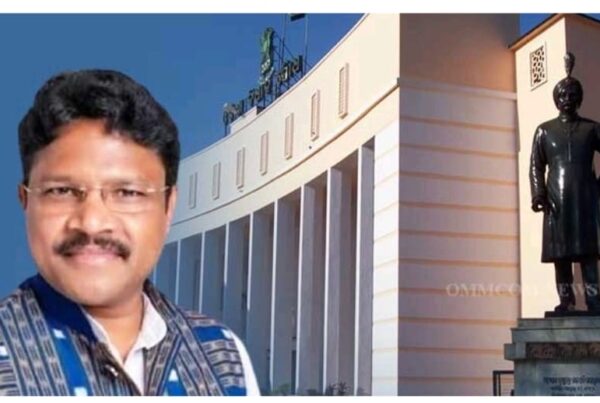![]()
School Reopening In Odisha: Govt Issues SOPs, know details:
News Highlights
- Only schools outside the containment zones shall be allowed to open.
- Prior to resumption of activities, all work areas including furniture, libraries laboratories and storage places areas of common use shall be sanitized
- Schools may not reopen without 100% access to potable drinking water and adequate functional toilets for all students.
Bhubaneswar: The Odisha Government has issued detailed Standard Operating Procedure (SOPs) for the schools which will reopen for class X and XII from July 26.
The School and Mass Education Department has shared the SOPs with the directors of Secondary Education and Higher Secondary Education, CHSE chairman and president of Board of Secondary Education, asking them to ensure the same.
SOPs for health, hygiene and other safety protocols before opening of schools
1. Only schools outside the containment zones shall be allowed to open. Further, students, teachers and employees living in containment zones will not be allowed to attend the school Students, teachers and employees shall also be advised not to visit areas falling within containment zones. Due to the dynamic nature of the situation, these decisions will be taken by the District Collector. The District Collector will also direct the relevant schools to immediately shut down in case their zone is declared as a containment zone.
2. Prior to resumption of activities, all work areas including furniture, libraries laboratories and storage places areas of common use shall be sanitized with particular attention to frequently touched surfaces.
3. Schools may not reopen without 100% access to potable drinking water and adequate functional toilets for all students. Any school without access to the above must first make these arrangements before reopening.
4. Hostel facilities are not to be opened at this point of time. Detailed SOP for Hostel operations will be issued when Hostel reopening is deemed safe.
5. School provided transportation should also be-discouraged to reduce risk. Transport facilities may run at minimum of 50% capacity with adequate sanitization before picking up and after dropping students.
6. High risk staff members with severe ailments or underlying conditions must take extra precaution.
7. No student should be coerced to come to school. Only those parents and students who feel comfortable attending school should do so
B. Provision to be made Inside schools
1. For ensuring social distancing and queue management inside and at the entrance of the premise, specific marking on the floor/ground with a gap of 6 feet should be made.
2. Inside classrooms, students should be made to sit at safe distances/alternate desks Fixed seating should be ensured. A particular seat/space should be earmarked for oach student (for example: based on roll number) so that there is limited exposure to other students’ physical spaces
3. Similarly, physical distancing shall also be maintained in staff rooms (by earmarking seats for teachers at an adequate distance), and other common areas (mess, libraries, cafeterias, otc.) with relevant markings as required If available, temporary space or outdoor spaces (in case of pleasant weather) may be utilized for conducting classes, keeping in view the safety and security of the children and physical distance protocols.
5. There must be adequate soap (solid/liquid) and running water in all washrooms and toilets. Hand sanitizers etc. for the teachers, students, and staff must be available mandatorily in each classroom.
Students should be encouraged to sanitize their hand when entering and leaving classrooms and toilets.
6. Any staff entrusted with cleaning/sweeping duties must be informed and trained about the cleaning/sanitization processes as well as general norms for waste management and disposal.
7. The school should display state helpline numbers and also numbers of local health authorities etc. to teachers/students/employees to contact in case of any 6neigency. Other posters related to the preventive measures about COVID-19 must also be displayed.
8. A separate isolation room has to be marked in the school and kept ready. This room may be used in case any student or staff develops Covid symptoms. The Composite School Grant under SSA may be used for purchase of all relevant cleaning and santization material
C. Development of a calendar of teaching and permissible activaties inside schools
1. Every school must determine how to run the school basing on the number of students and number and size of class rooms available. Maximum 20-25 students (depending upon classroom size) should be allowed to sit in a classroom to ensure safe distancing among students. For schools with an adequate number of classrooms all students can be asked to come on a daily basis.
2. School timings should be as usual.
3. Recess/Break should be staggered for different classes to ensure there is no overcrowding at common spaces and toilets.
4. Students should be encouraged to bring healthy and nutritious food from home and should be advised not to share it with fellow students.
5. Assemblies, sports and events that can lead to crowding are prohibited. No outside vendor should be allowed to sell any eatables inside the school premises or within 100 meters from the entry gate/point.
6. Syllabus for all classes, as revised and communicated by the Govt should start from the beginning.
D. Sansitization of teachers, parents, staff, and members of School Management Committee
1. Before the opening of the school, a meeting of al SMC/SMDC members and any other parents who desire to attend the meeting shall be called by the Head of School
2. In this meeting, a detailed discussion on the safety protocols must be held, inputs of all members incorporated, and consent taken from SMCSMDCs. Proceedings at the meeting must be recorded in the relevant register maintained in the school .
3. The SMC/SMDC must also be encouraged to walk around the school premises ad ensure that all hygiene and safety precautions are there to their satisfaction.
4. All these information should also be shared with the parents community through Whats App message or SMS. The messages also include dos/don’ts that the parents/students must follow.
5 . Written consent should be sought from parents for their child to attend school. Students opting to study from home with the consent of the parents may be allowed to do so.
SoPs For Health, Hygiene And Other Safety Protocols After Opening Of Schools
A. Monitoring Team to be made along with SMCISMDC members
1. Every school must have a Covid Monitoring Team comprising of 1 teachers & 1 parent member from SMC/SMDC. The responsibility of the Monitoring Team will be to: 2 Ensure health and hygiene within the school. This team will come to school 30 min early and leave 30 mins after school hours to ensure full cleanliness/sanitization in school.
4. Emergency response- Have a clear plan in place for contingencies and take action anytime there is an emergency or risk in school.
a. In addition, the team will also support the HM with:
5. Preperation and implementation of all calendars, schedules and activities in the school. HM will decide the school schedule, calendar, take decision on academic activities with a key consideration towards ensuring the right balance between learning and safety of students.
6. Continuing to focus on regular learning at home for those students who are unable to come to school for any reason.
Regular monitoring of Hygiene and Sanitation inside the school
1. School campus should be cleaned daily and a daily record of areas cleaned may be maintained. Note that students should not be involved in any of the cleaning activities for health and safety reasons.
2. Provision of soap (solid/iquid) in toilets and hand sanitizers in other places facilities of common use should be ensured. 3. Students and employee should be sthictly advised to wear masks and not dispose of used face covers / masks inside the school. All students and staff to arrive at school wearing a face cover mask and continue wearing it all through, especially when in class, or doing any activity in groups.
3. Care should be taken to ensure and educate children not to exchange masks with others.
4. Mandatory hand washing for all students and staff at regular intervals as per the planned protocol following physical/social distancing norms should be ensured Hand washing time should be a minimum of 40 seconds.
5. Every child needs to learn how to cough or sneeze into a tissue paper and avoid touching face, eyes, mouth, and nose.
6. Students commuting through public transport should be adequately guided by schools to take all precautions such as physical/’social distancing, covering nose and mouth with up face cloth/masks, santizing hands after touching any surface etc
7. Students should not share any material (textbooks, notebooks, pen, pencil, eraser, tiffin box, water bottles, etc.) with each other.
8. Spitting should be absolutely prohibited.
9. Windows and doors of the classrooms and other rooms to be kept open for ventilation.
10. Regular health check-up of students, staff and employees should be organized by block and district office with the help of local Medical Officers. This officer should conduct regular checks through the School Heath Programme.
Social-emotional well-being of students
It is possible that many students may be coming back to school after suffering traumatic incidents at home over the last few months. Teachers must keep an eye on the emotional well being of the students and take necessary supportive action along with the parents when needed.
A small sensitization session can be done for the teachers in this regard before school reopening.
In the event of any student or staff developing Covid 19 symptoms, the first step will be to separate the person from the rest of the people and keep the person in the isolation room in an isolated place inside school premises.
2. The School Management must inform the parent or guardian about the health condition of the ill student. The School management must immediately inform the nearest medical facility or call the State or district helpline.
3. Disinfection of the premises to be taken up if the person is found Covid positive.










